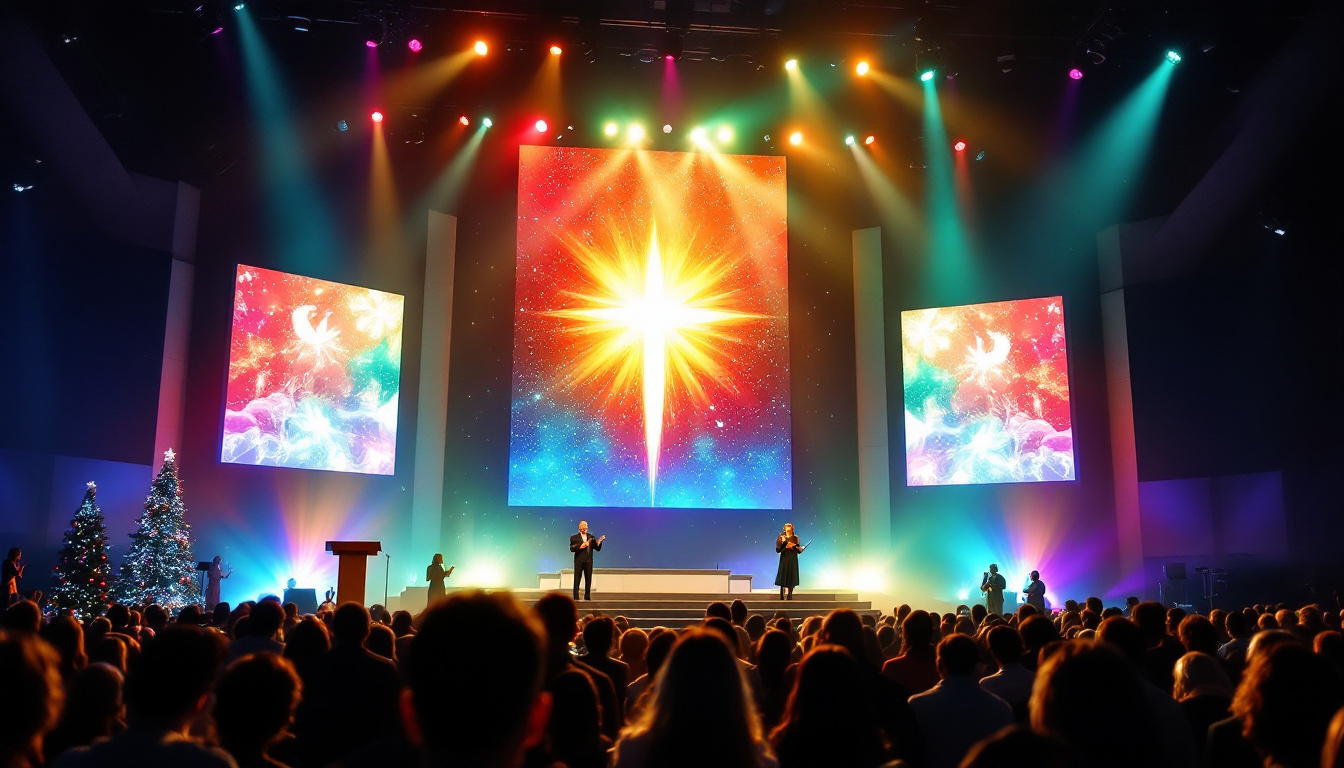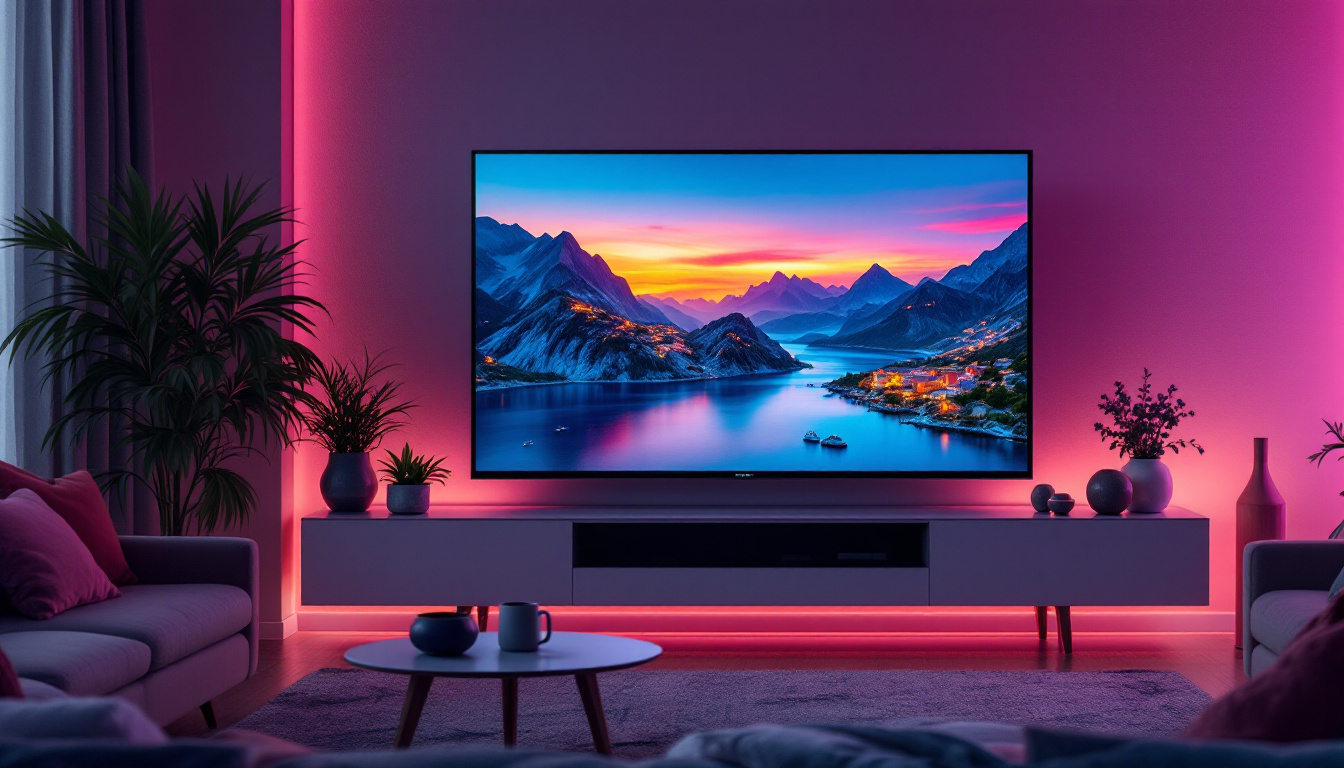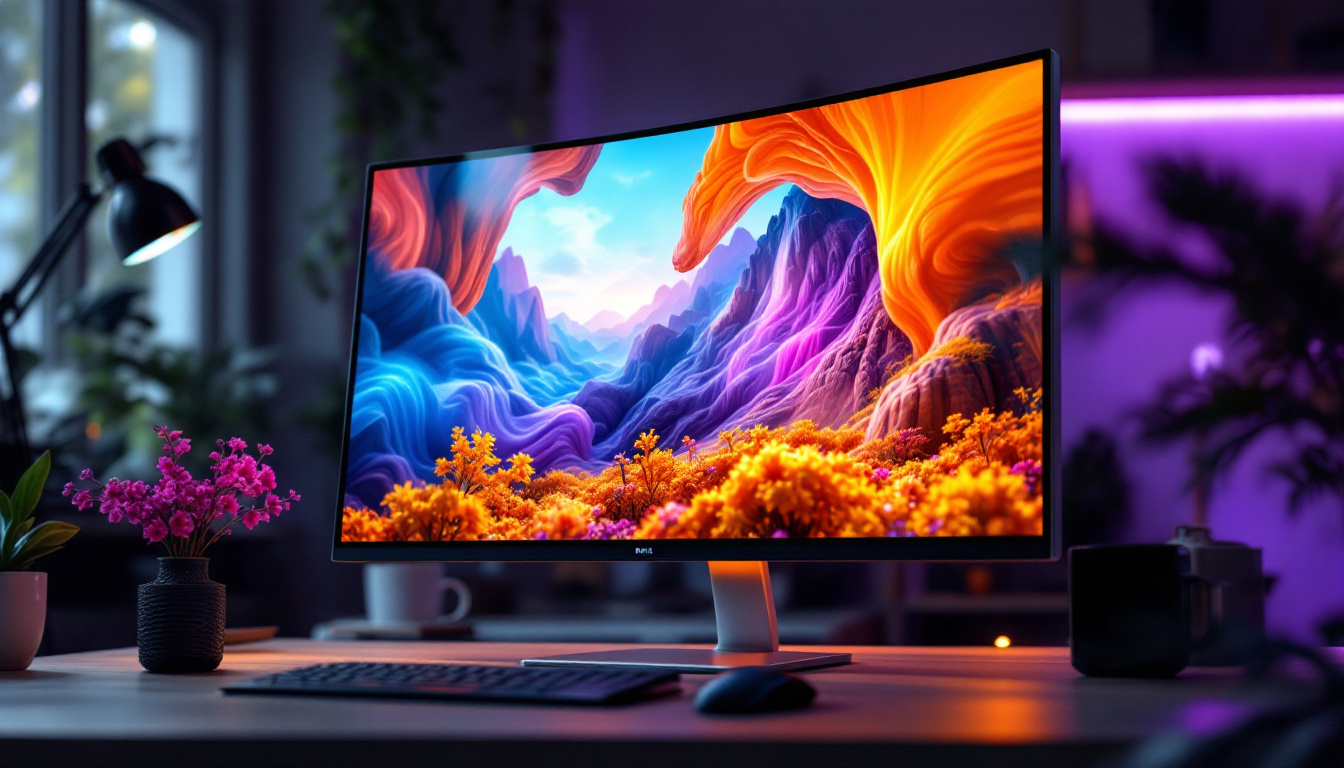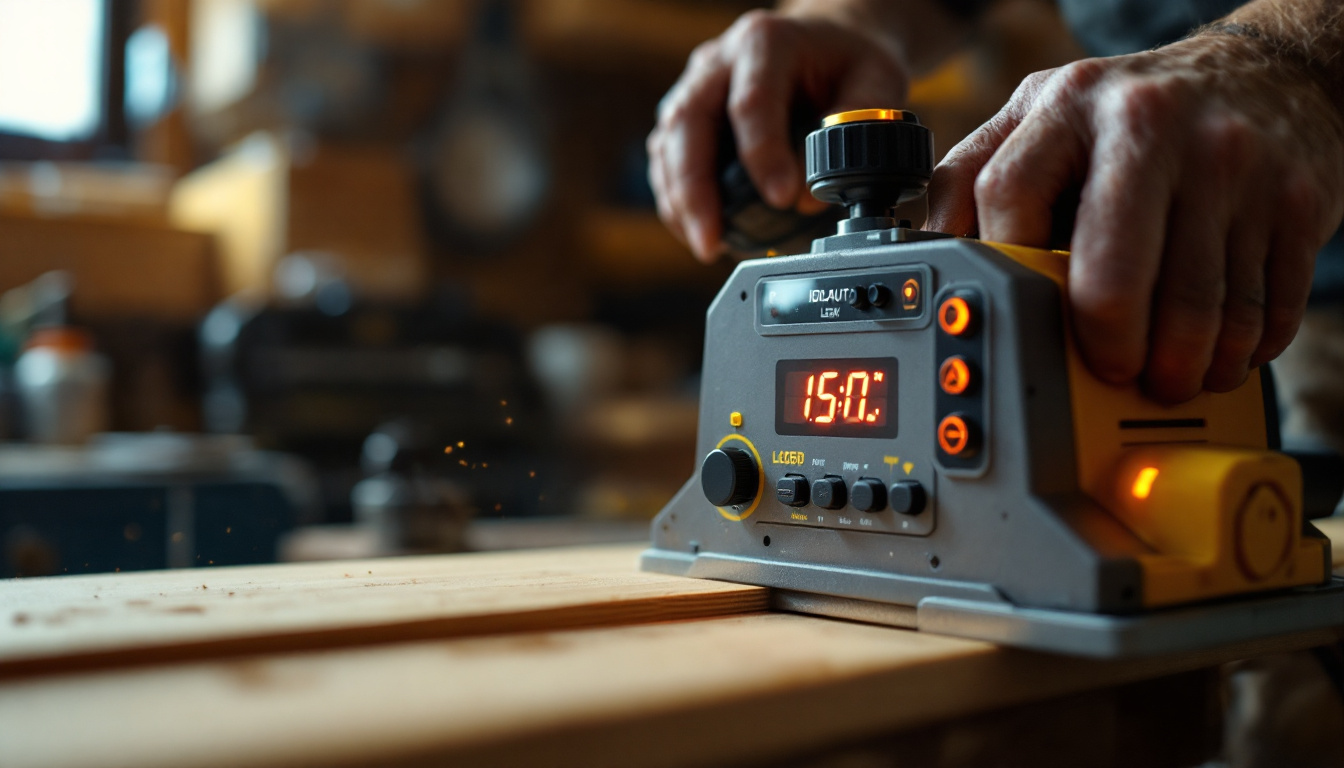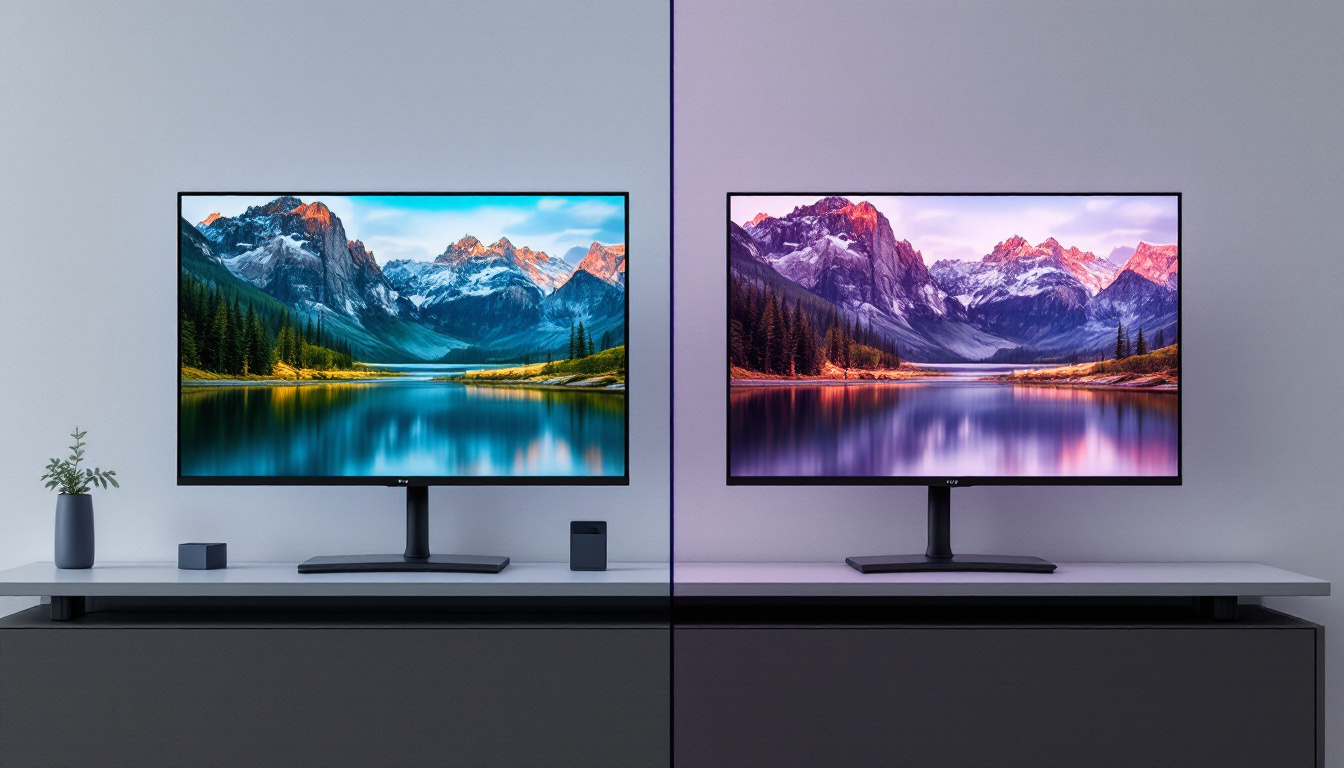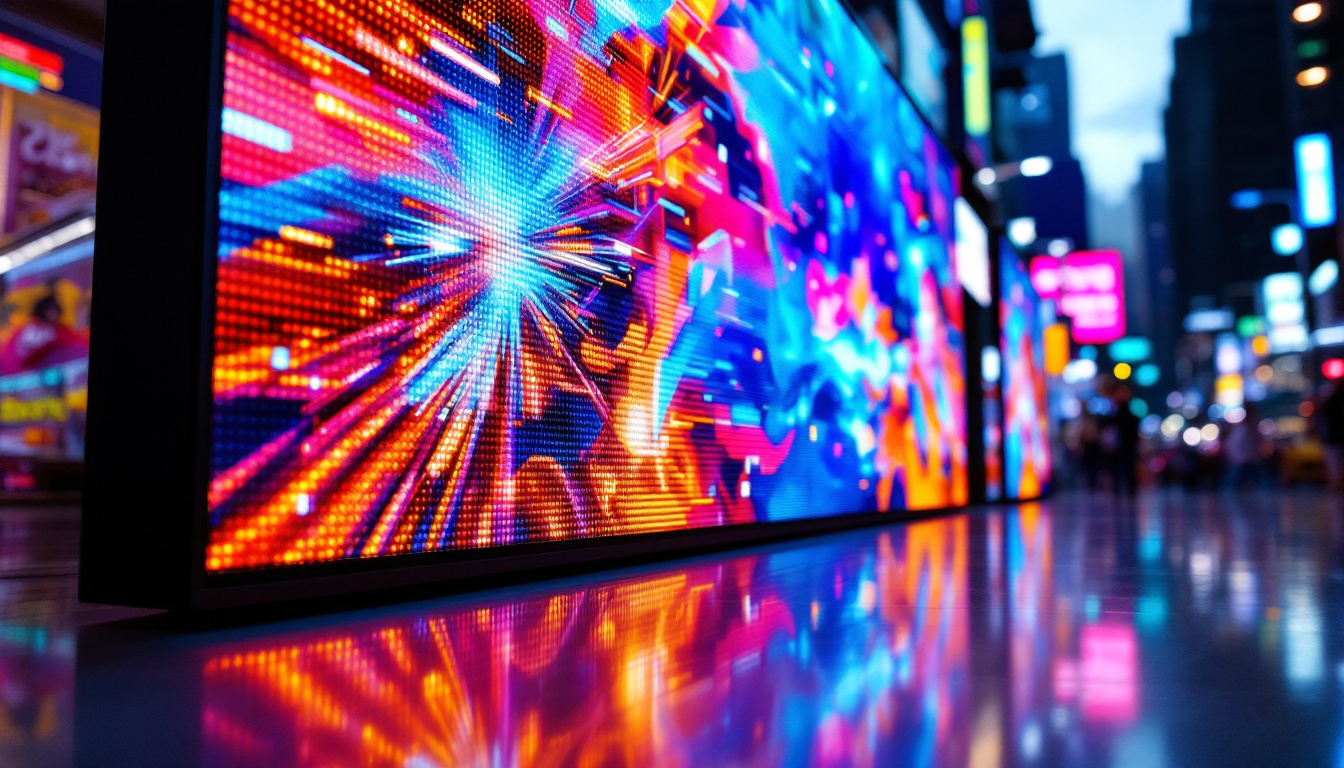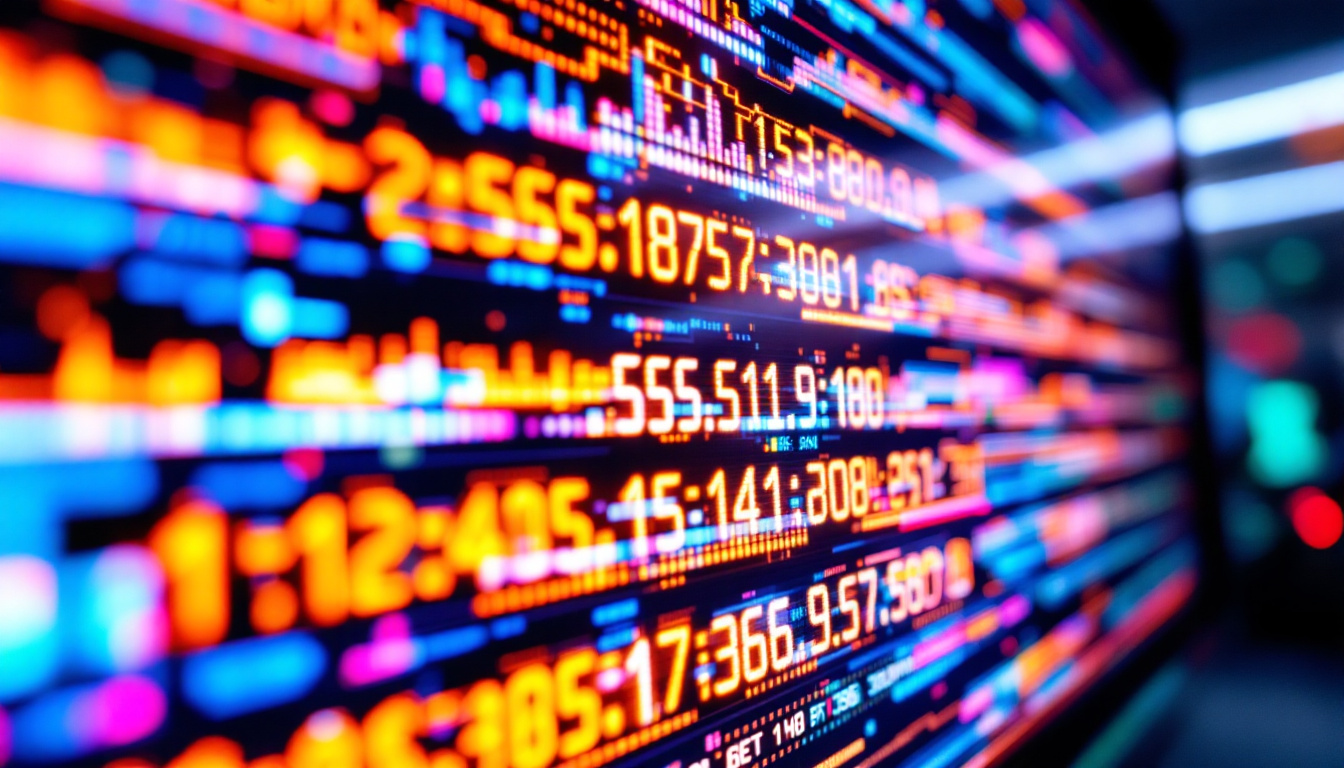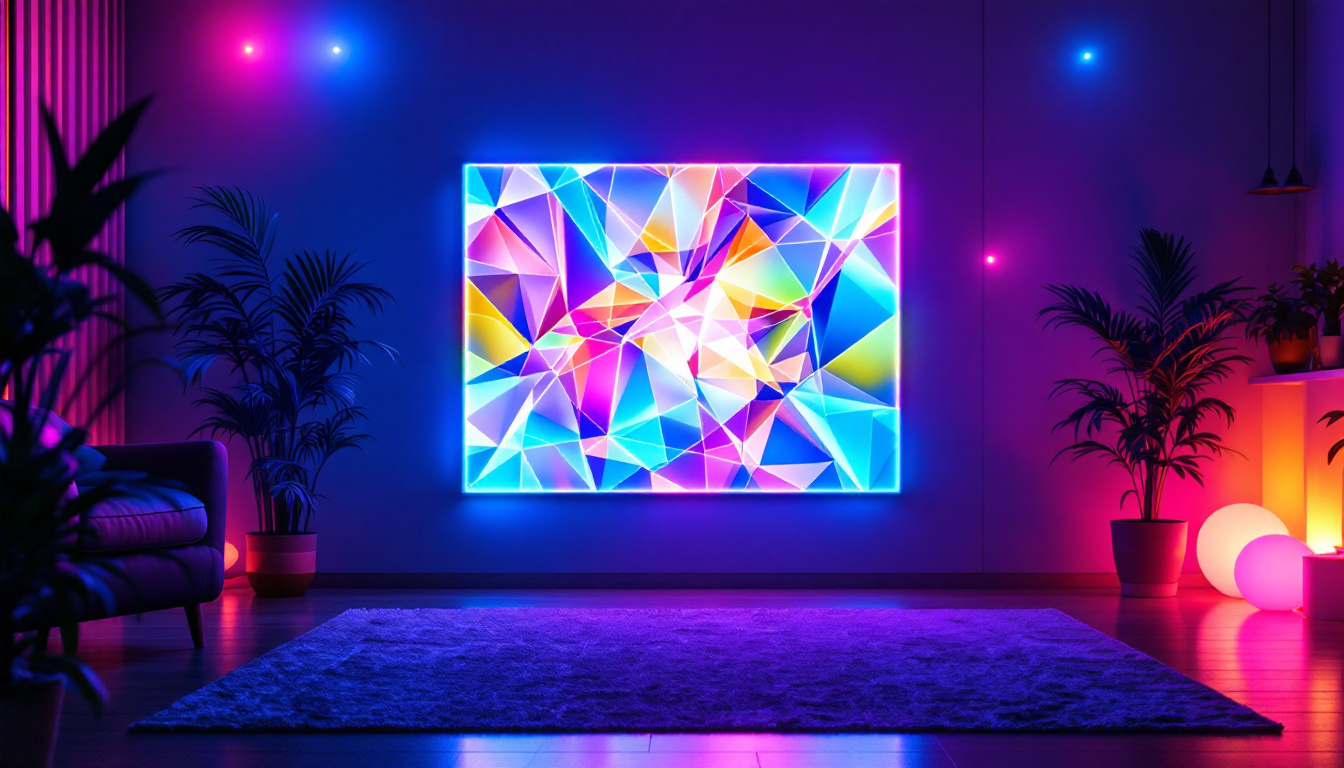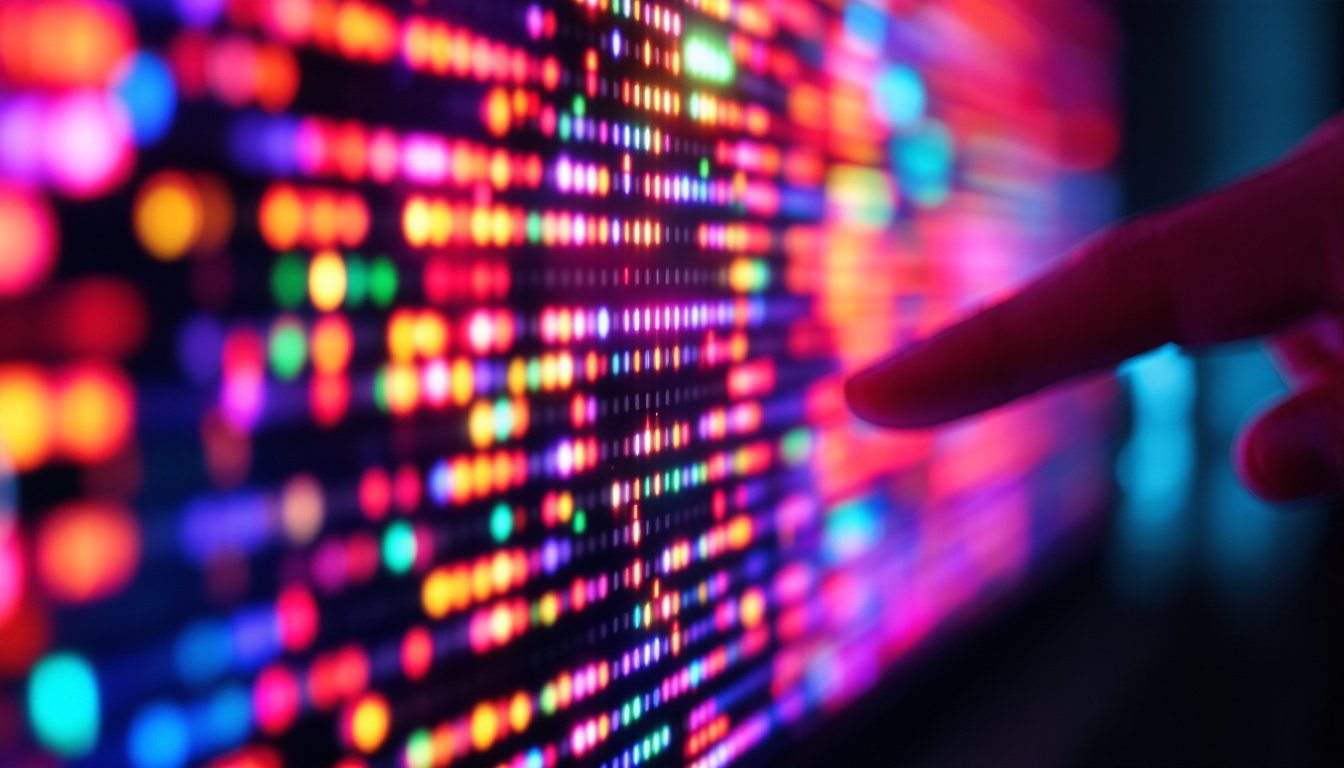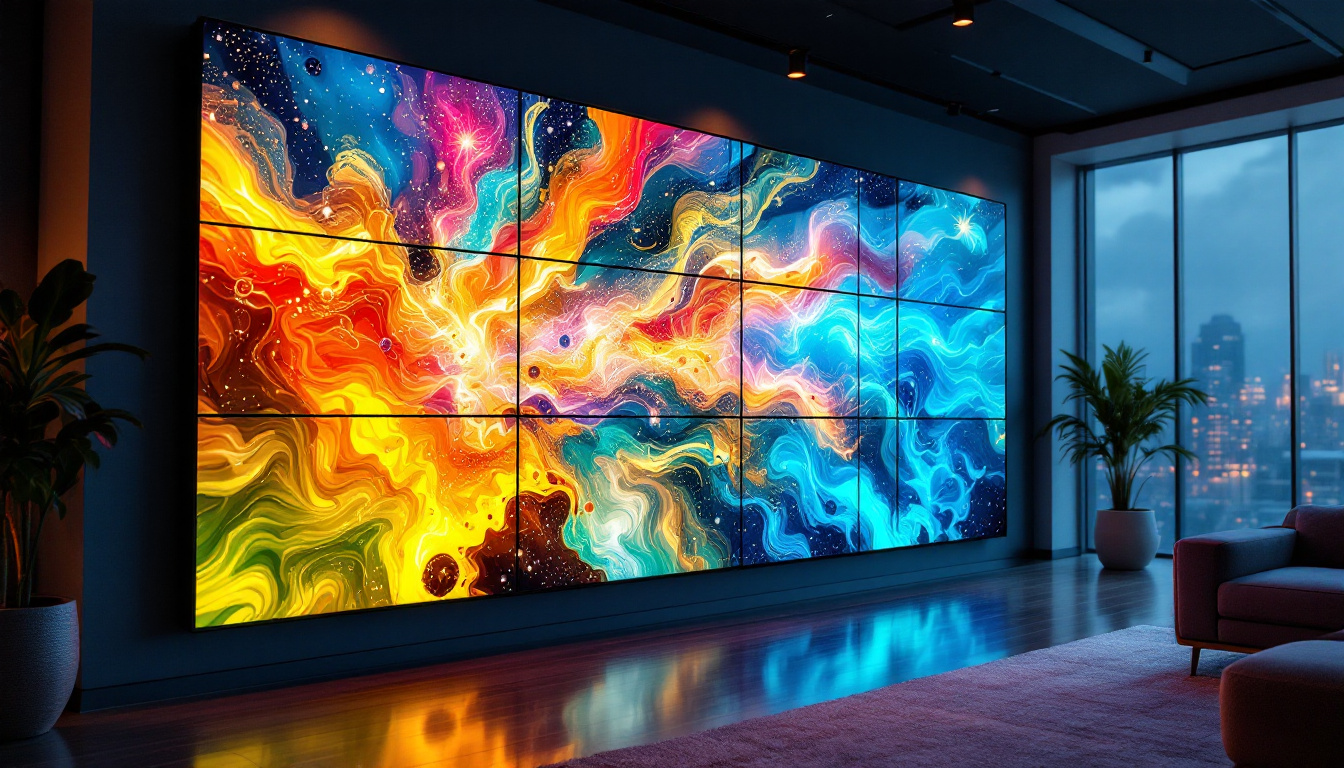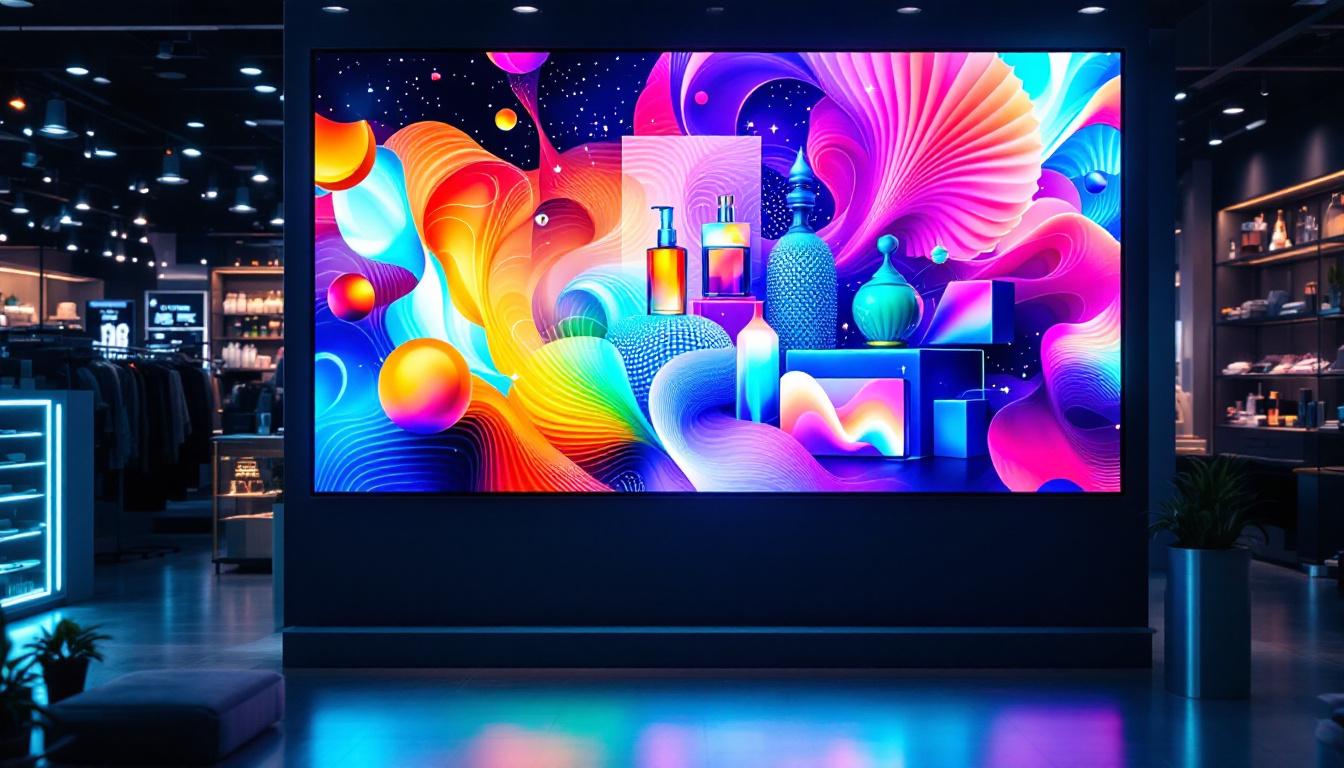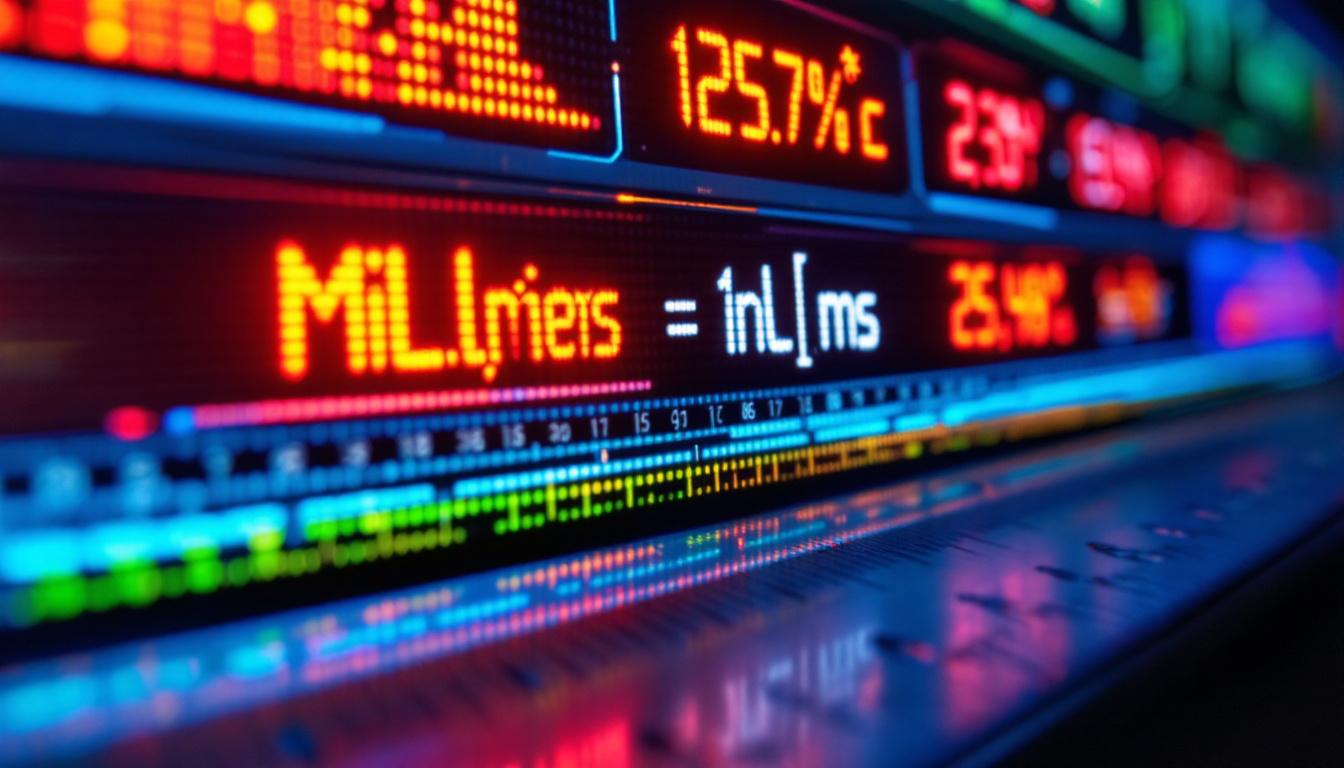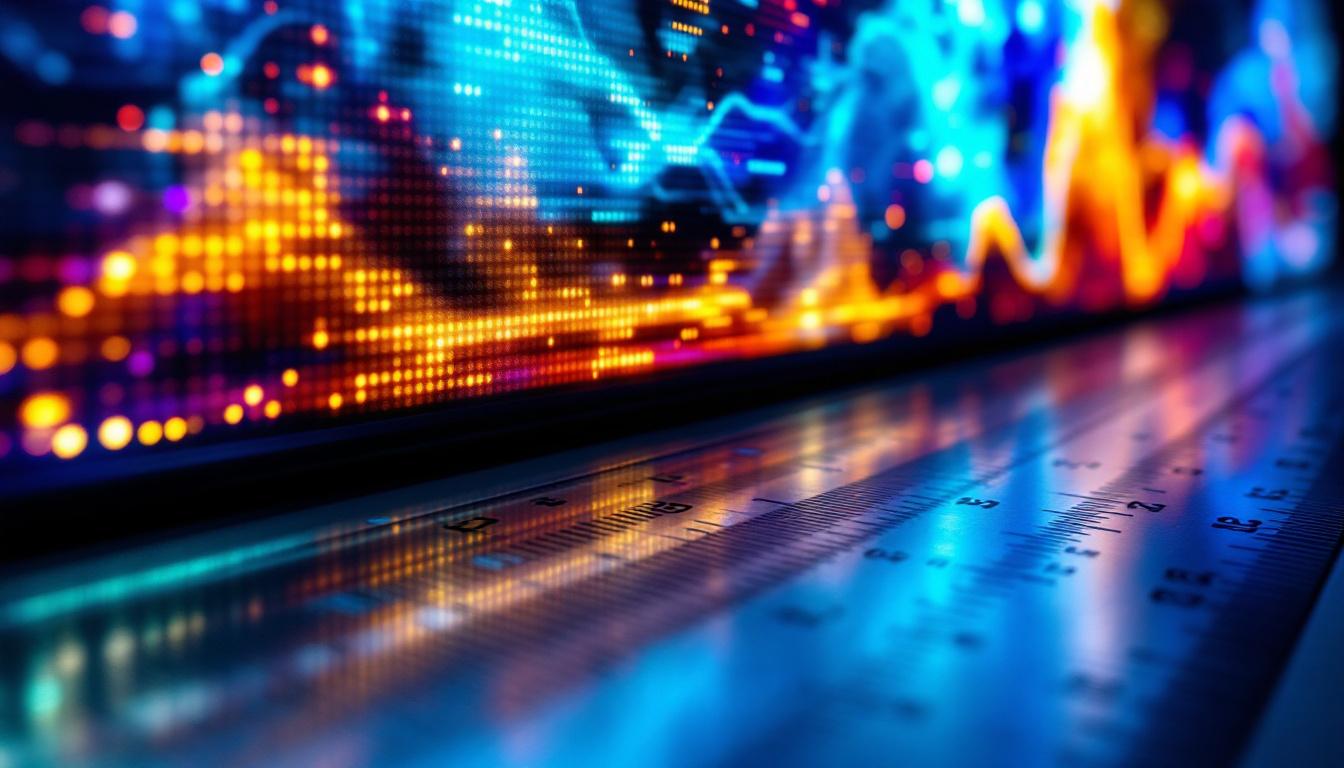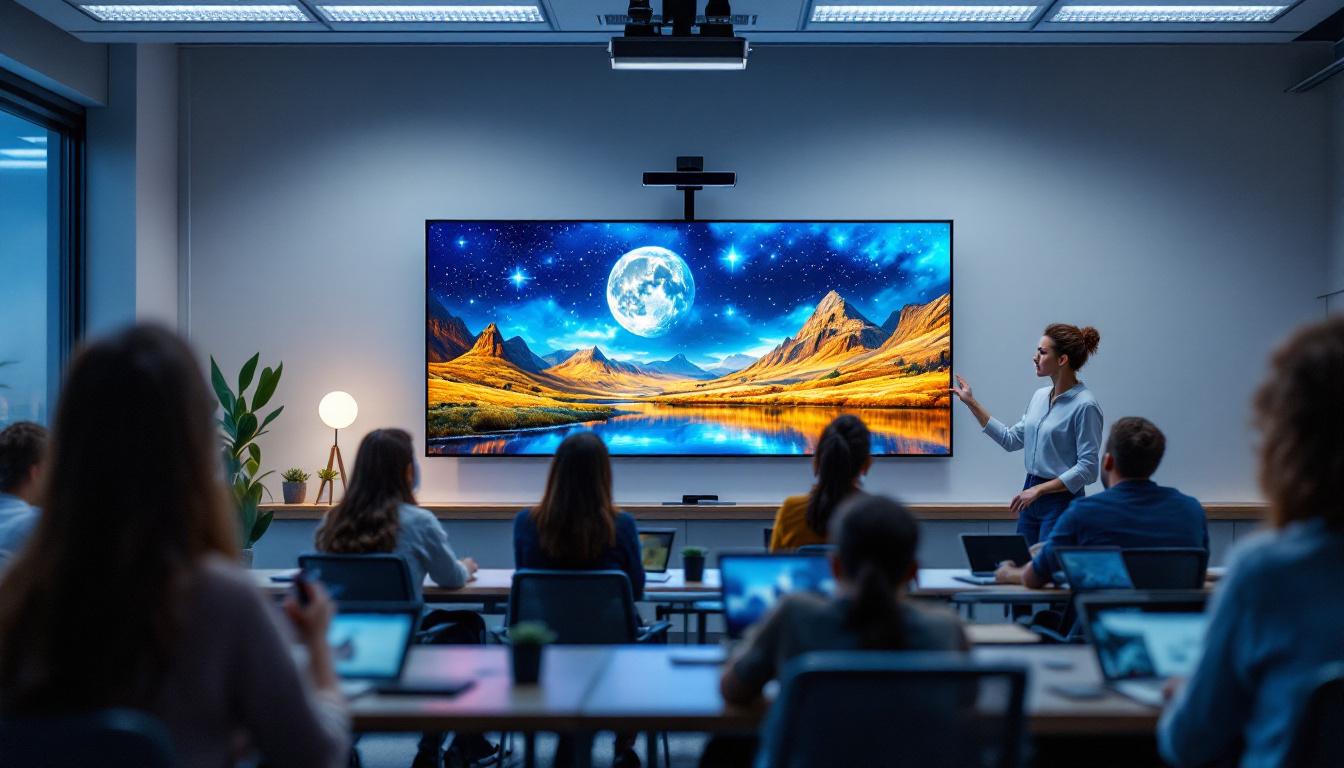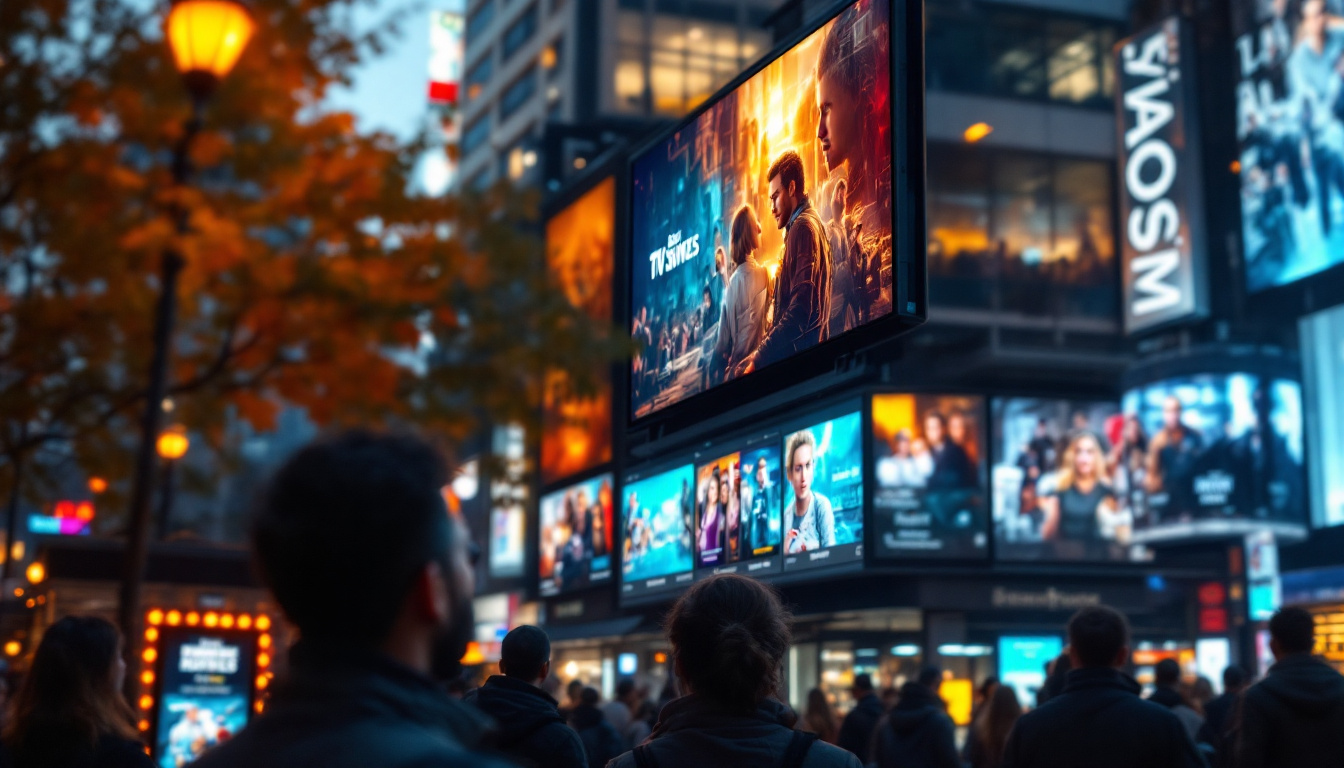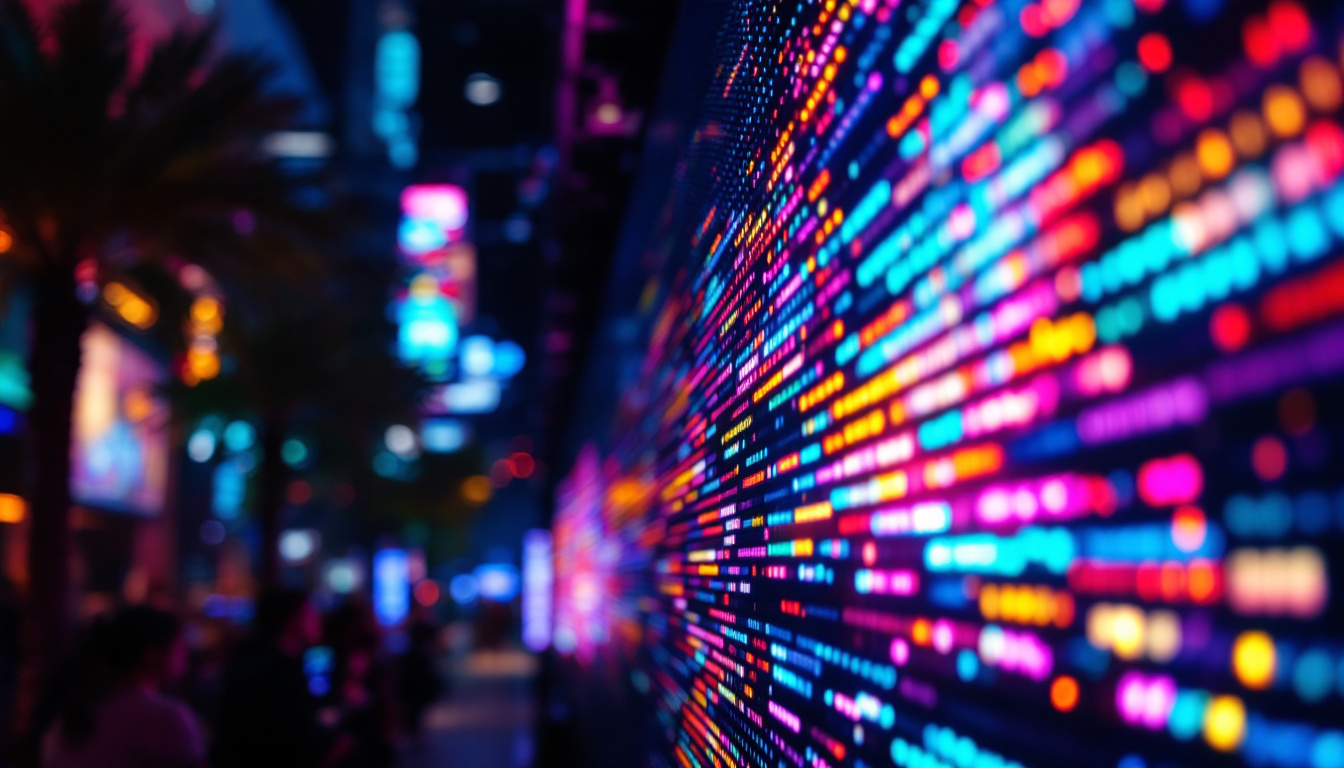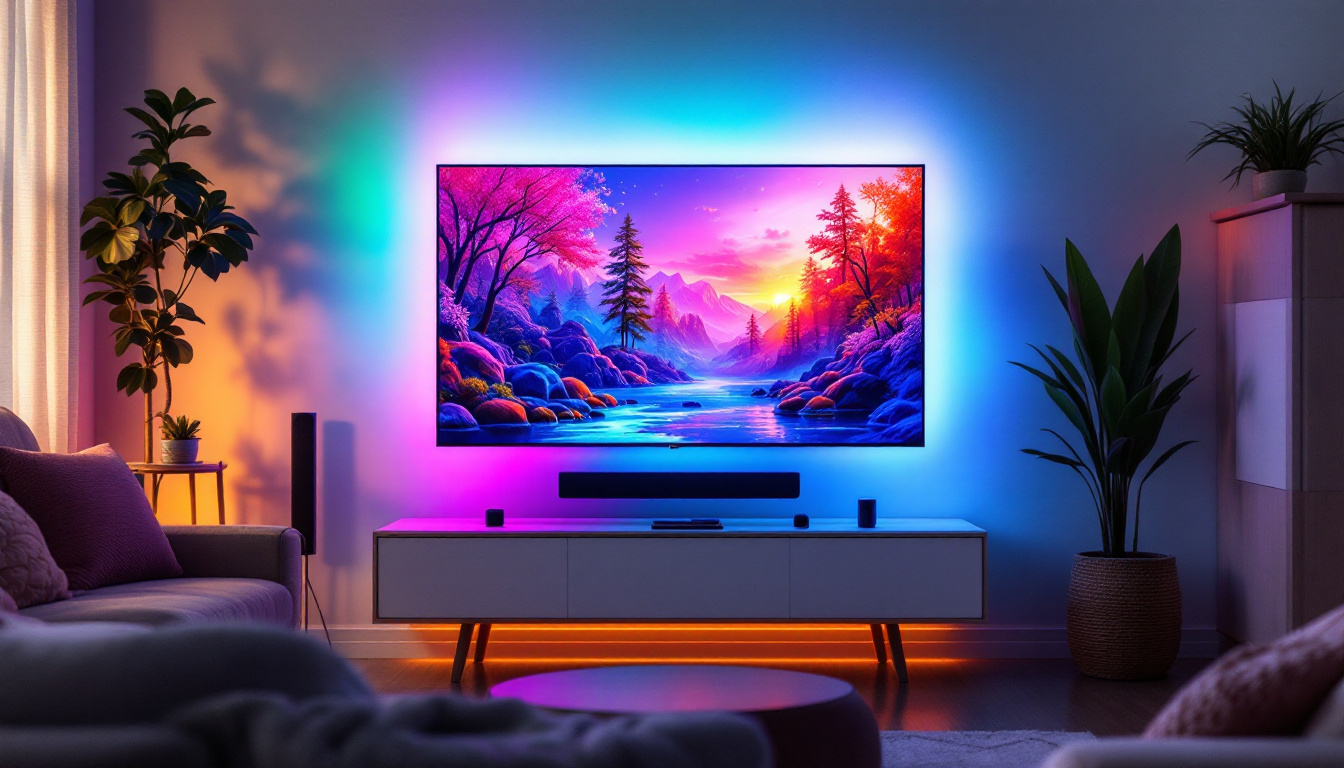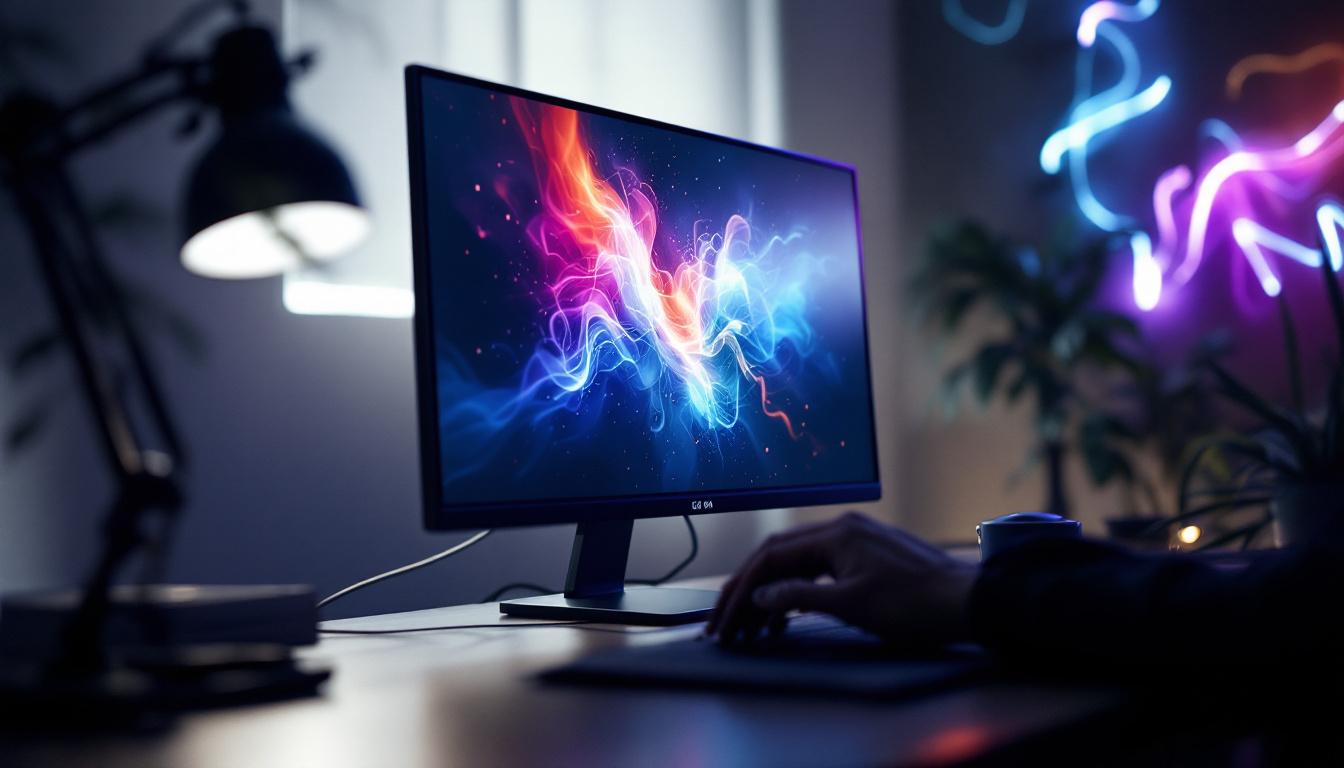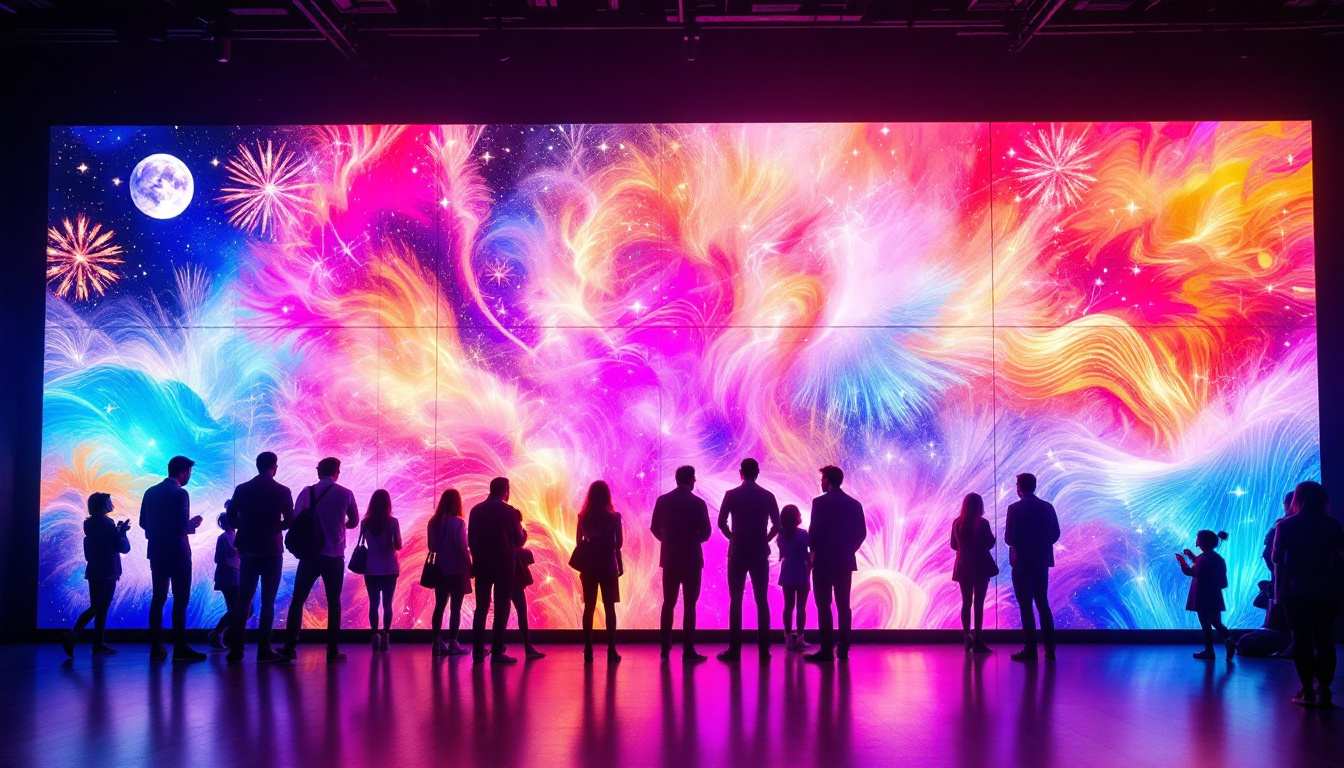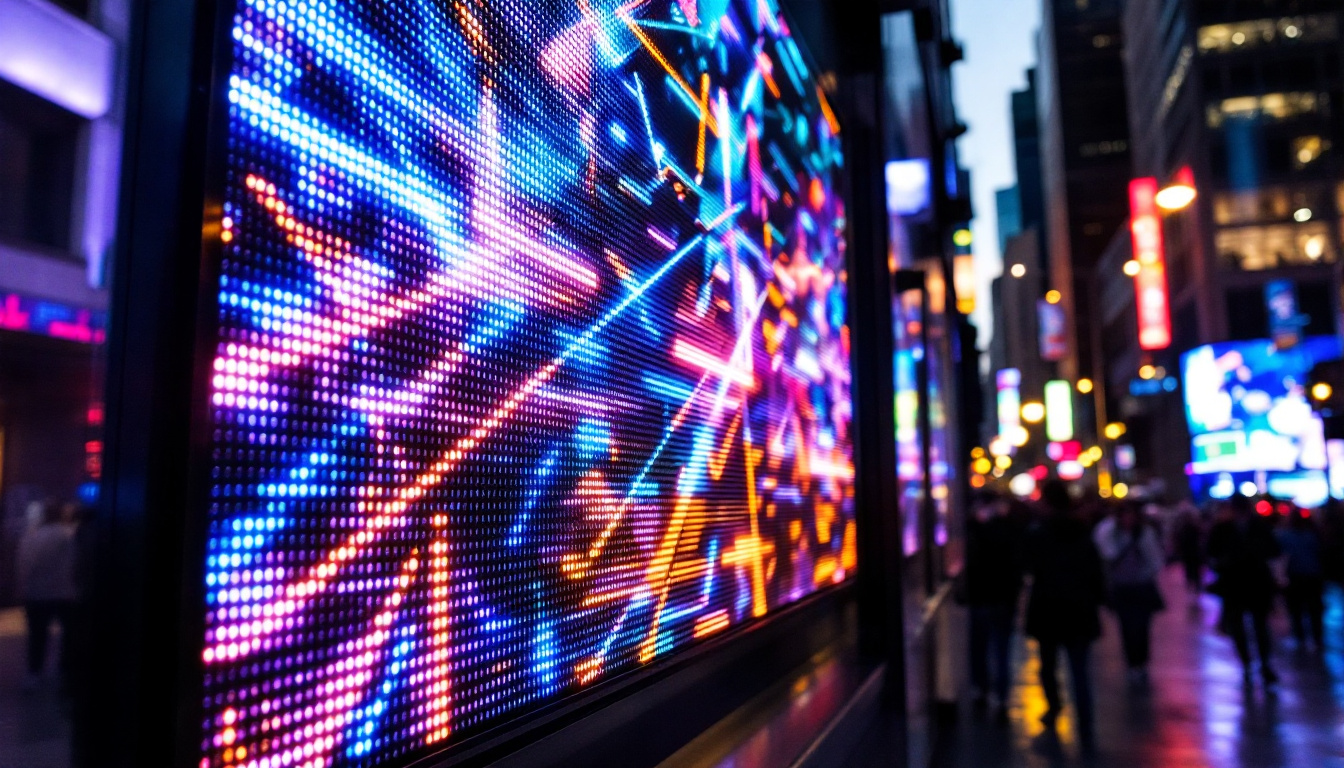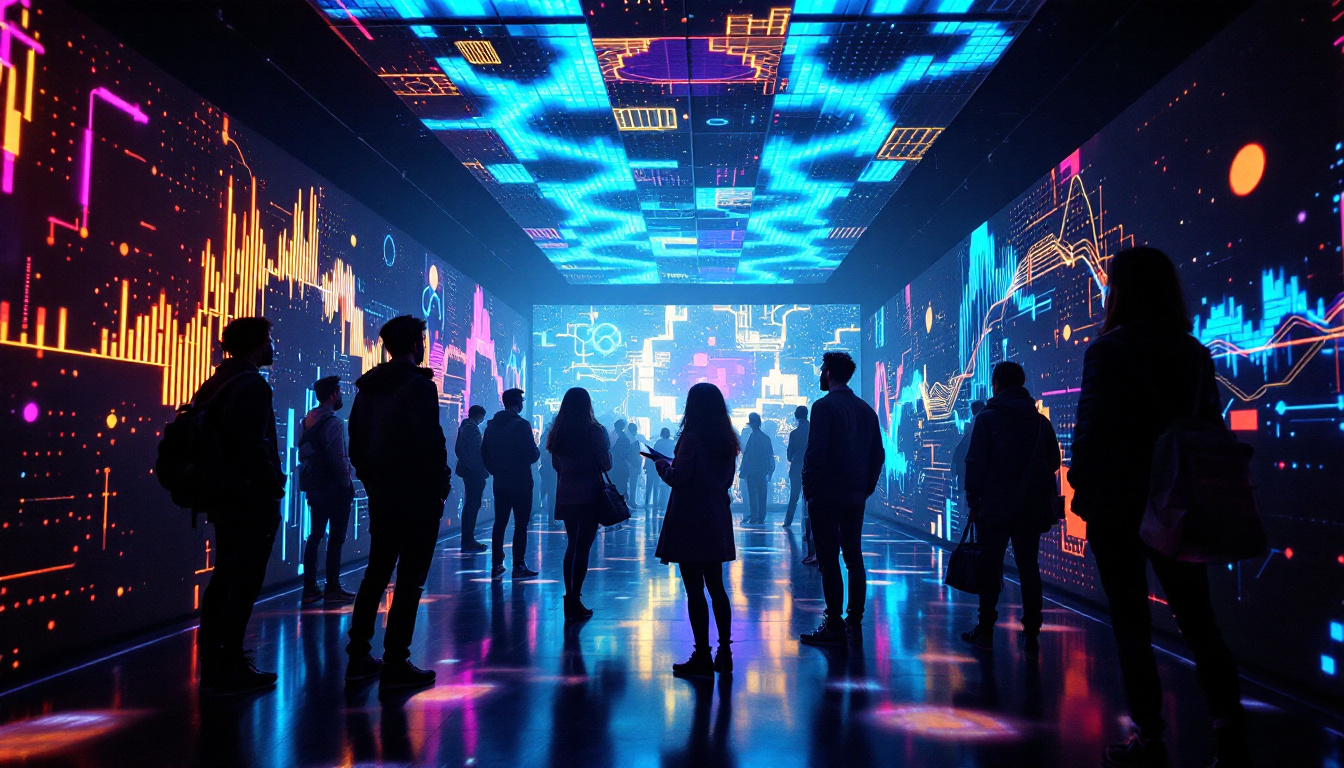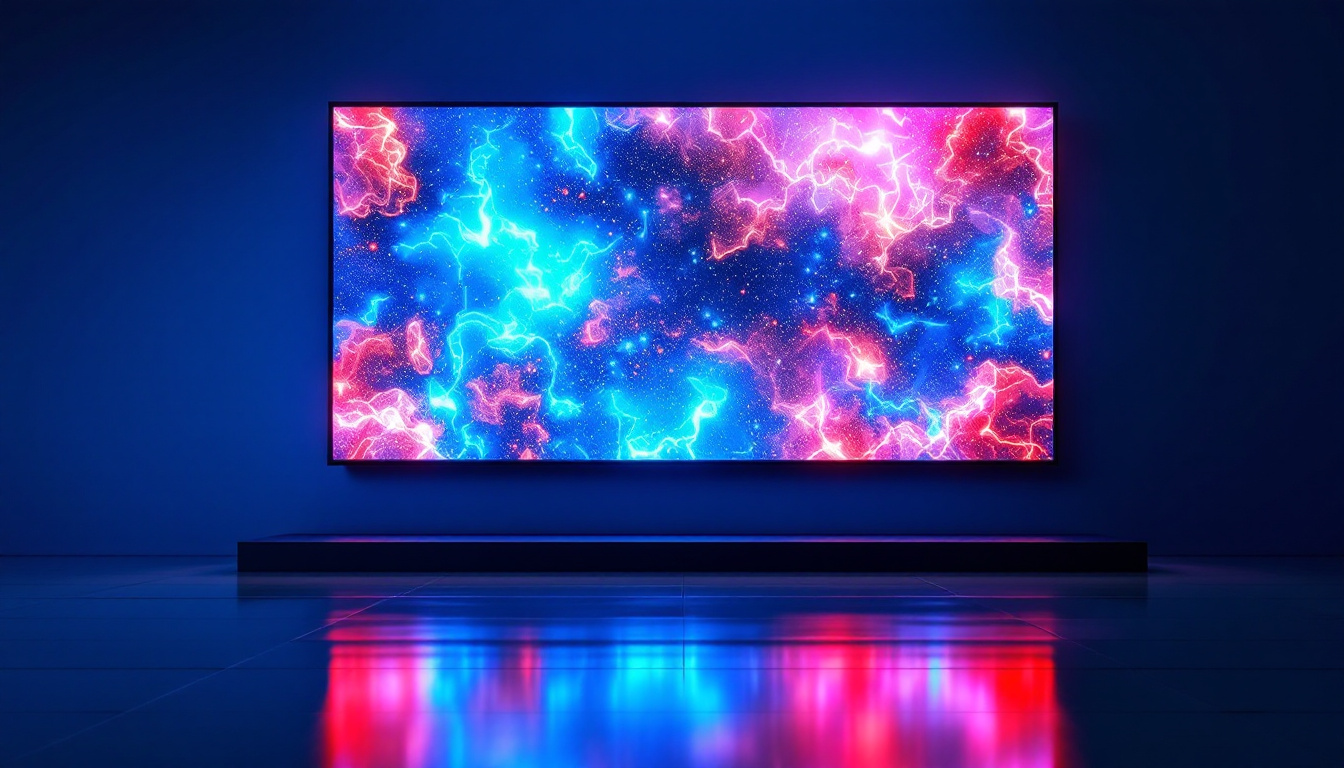In today’s fast-paced digital world, organizing and displaying photos has evolved far beyond traditional frames and albums. The advent of LED display technology has revolutionized the way people showcase their memories, blending innovation with aesthetics. A Wall Picture Organizer utilizing LED displays offers a dynamic, customizable, and visually striking solution for photo presentation, whether in homes, offices, or public spaces.
This article explores the concept of Wall Picture Organizers based on LED display technology, explaining how they work, their benefits, and practical applications. It also delves into the technical aspects and considerations for selecting the right LED display system for personal or professional use.
Understanding Wall Picture Organizers with LED Displays
At its core, a Wall Picture Organizer with an LED display is a digital frame or panel designed to showcase images in a modular and often interactive manner. Unlike static photo frames, these organizers use LED technology to illuminate and present images with vivid colors and high resolution.
LED (Light Emitting Diode) displays are widely known for their brightness, energy efficiency, and longevity. When incorporated into wall-mounted picture organizers, they enable users to display a rotating gallery of images, videos, or even animations, all controlled via software or mobile applications.
How LED Displays Enhance Photo Organization
Traditional photo organization often involves physical albums or framed pictures arranged on walls or shelves. This method, while sentimental, has limitations in space, flexibility, and interactivity. LED displays overcome these challenges by allowing multiple images to be stored digitally and displayed sequentially or simultaneously.
With LED technology, users can:
- Customize the display layout, choosing from grids, slideshows, or mosaic styles.
- Adjust brightness and color settings to suit ambient lighting conditions.
- Integrate motion sensors or timers to automate image transitions.
- Update the photo collection remotely via Wi-Fi or Bluetooth connections.
This flexibility makes LED-based Wall Picture Organizers ideal for dynamic environments where the content needs to be refreshed frequently or tailored to specific audiences. For example, in a corporate setting, these displays can be used to showcase team achievements, project milestones, or even motivational quotes, creating an engaging atmosphere that fosters collaboration and creativity. In homes, they can serve as a rotating gallery of family memories, holiday snapshots, or artistic displays that can be easily changed with the seasons or special occasions.
Moreover, many modern Wall Picture Organizers come equipped with additional features that enhance user experience. Some models include touch screens, allowing for direct interaction with the display, while others may offer voice command capabilities for a hands-free experience. This interactivity not only makes it easier to navigate through images but also adds a layer of fun, especially for children who can engage with the display in playful ways. Additionally, the ability to integrate social media feeds means that users can instantly share and showcase their latest adventures, ensuring that their wall display remains fresh and relevant.
Key Benefits of LED Wall Picture Organizers
Adopting LED displays for photo organization offers several compelling advantages over conventional methods. These benefits resonate with both individual users and businesses seeking innovative display solutions.
Vibrant Visual Quality and Customization
LED displays provide superior color accuracy and brightness compared to LCD or printed photos. This results in images that are more vivid and lifelike, enhancing the emotional impact of the displayed memories. Additionally, customization options such as color temperature adjustment and contrast control allow users to optimize the viewing experience for different environments. For instance, in a dimly lit room, users can adjust the brightness to ensure that the photos pop without straining the eyes. Furthermore, the ability to create dynamic slideshows with transitions and effects adds an engaging element, making each viewing experience unique and captivating.
Space Efficiency and Versatility
Instead of cluttering walls with multiple frames, a single LED display panel can showcase hundreds or thousands of images in one place. This consolidation saves physical space and reduces visual clutter. Moreover, LED panels come in various sizes and shapes, including flexible and curved designs, enabling creative installations that complement interior decor. For example, a large, wall-mounted LED display can serve as a stunning centerpiece in a living room, while smaller, modular panels can be arranged in a gallery-style layout. This versatility allows users to adapt their displays to fit any space, whether it be a cozy home environment or a bustling corporate office.
Interactivity and Smart Features
Modern LED Wall Picture Organizers often incorporate smart technology, allowing interaction via touchscreens, voice commands, or mobile apps. Features like facial recognition can automatically display photos of specific individuals when they approach the display. Integration with social media platforms enables real-time sharing and updating of photo content, keeping the display fresh and engaging. Additionally, users can curate themed galleries or seasonal displays with ease, allowing for a dynamic showcase that reflects current events or personal milestones. This interactivity not only enhances user engagement but also encourages sharing and collaboration among family members or colleagues, making it a communal experience.
Energy Efficiency and Durability
LED technology is known for its low power consumption and long lifespan. Compared to traditional lighting or display methods, LED panels consume significantly less energy, making them environmentally friendly and cost-effective over time. Their robust construction also ensures resistance to shocks and temperature variations, suitable for both indoor and outdoor use. This durability means that users can confidently install LED displays in high-traffic areas or exposed outdoor settings without fear of damage. Furthermore, the low heat emission of LED technology contributes to a safer environment, reducing the risk of overheating and extending the life of the display, which is particularly beneficial for long-term installations.
Applications of LED Wall Picture Organizers
The versatility of LED Wall Picture Organizers extends across various sectors, each leveraging the technology’s strengths to meet unique needs.
Residential Use: Personalized Home Galleries
In homes, LED picture organizers serve as modern digital photo frames that bring family memories to life. They can be programmed to display birthday photos, travel adventures, or seasonal themes, creating a dynamic and personalized ambiance. Some families use them to celebrate milestones by showcasing chronological photo stories, turning walls into living albums.
Corporate and Commercial Environments
Businesses utilize LED wall displays for branding, advertising, and employee engagement. For example, companies may install photo organizers in lobbies to showcase corporate events, achievements, or team highlights. Retail stores use them to display product images or promotional content, attracting customers with bright and eye-catching visuals.
Public Spaces and Museums
Museums and galleries integrate LED picture organizers to present rotating exhibits or interactive storytelling. These displays can provide detailed information alongside images, enhancing visitor engagement. Public spaces like airports or hotels use LED photo walls to share local culture, news, or visitor information dynamically.
Technical Considerations When Choosing an LED Wall Picture Organizer
Selecting the right LED display for a Wall Picture Organizer involves evaluating several technical factors to ensure optimal performance and user satisfaction.
Resolution and Pixel Pitch
The resolution determines the clarity and detail of the displayed images. Pixel pitch, the distance between individual LED pixels, affects how sharp the image appears from various viewing distances. For close-up viewing, a smaller pixel pitch (e.g., 1.5mm to 2.5mm) is preferable, while larger pitches (above 4mm) suit bigger installations viewed from afar.
Brightness and Contrast Ratio
Brightness, measured in nits, is crucial for visibility in different lighting conditions. Indoor displays typically require 300 to 800 nits, while outdoor installations may need 2,000 nits or more to combat sunlight glare. A high contrast ratio enhances image depth, making colors pop and details stand out.
Connectivity and Control Options
Modern LED organizers offer various connectivity options, including Wi-Fi, Bluetooth, USB, and Ethernet. The choice depends on how users plan to update and manage content. Control interfaces can range from dedicated remote controls to smartphone apps and cloud-based platforms, providing flexibility and ease of use.
Installation and Maintenance
Consider the mounting options and physical dimensions to ensure the display fits the intended space. Some LED panels are modular, allowing for scalable installations by combining multiple units. Maintenance requirements, such as ease of access for repairs and cleaning, should also be factored into the decision-making process.
Future Trends in LED Wall Picture Organizers
The intersection of LED technology with emerging innovations promises exciting developments in Wall Picture Organizers.
Integration with Artificial Intelligence
AI-powered photo organizers can analyze user preferences, facial recognition, and contextual data to curate personalized photo displays automatically. This smart curation enhances user engagement by showing the most relevant images at the right moments.
Flexible and Transparent LED Panels
Advances in flexible LED technology enable displays that can bend or wrap around surfaces, opening new possibilities for creative wall designs. Transparent LED panels allow images to be displayed on glass surfaces without obstructing the view, ideal for storefronts and architectural applications.
Augmented Reality (AR) Enhancements
Combining LED displays with AR can create immersive photo experiences. Viewers might interact with images through gestures or mobile devices, unlocking additional content such as videos, audio narrations, or 3D effects, enriching the storytelling aspect of photo displays.
Conclusion
Wall Picture Organizers utilizing LED display technology represent a significant leap forward in how photos and visual content are curated and presented. Their ability to combine vibrant imagery, customization, and interactivity makes them appealing for a wide range of applications, from personal home galleries to corporate branding and public exhibitions.
As LED technology continues to advance, these organizers will become even more versatile, intelligent, and integrated into everyday environments. For anyone looking to elevate their photo display experience, understanding the capabilities and options of LED Wall Picture Organizers is essential to making an informed choice that balances aesthetics, functionality, and future-proofing.
Discover the Future of Photo Displays with LumenMatrix
Ready to transform your space with the vibrant, customizable, and interactive capabilities of LED display technology? LumenMatrix is at the forefront, offering a wide array of innovative LED display solutions that cater to every need, from Indoor and Outdoor LED Wall Displays to specialized options like Vehicle, Sports, and Floor LED Displays. Embrace the future of visual storytelling and create unforgettable experiences with our state-of-the-art LED modules. Check out LumenMatrix LED Display Solutions today and see how we can help you share your message with brilliance and precision.

